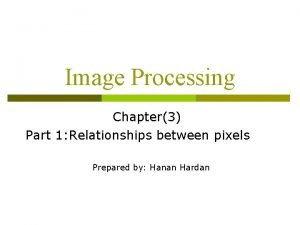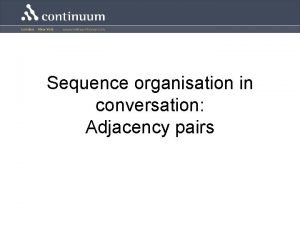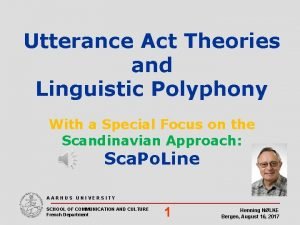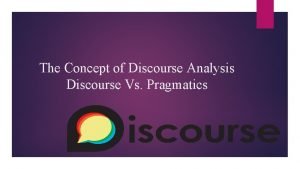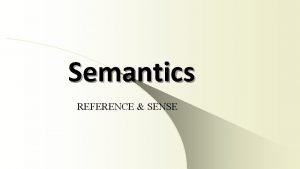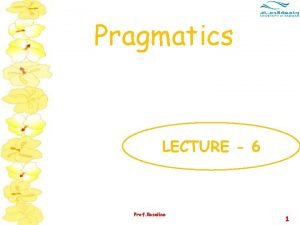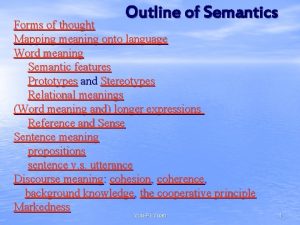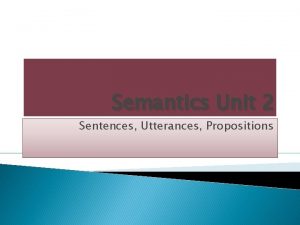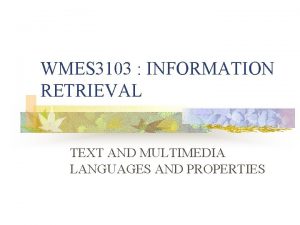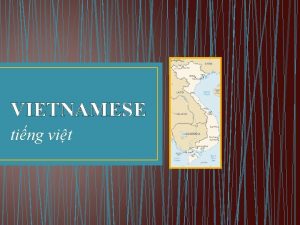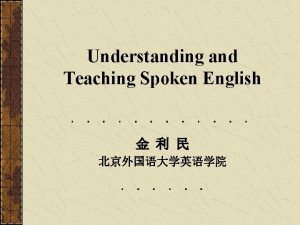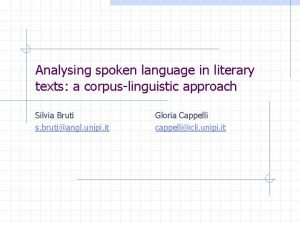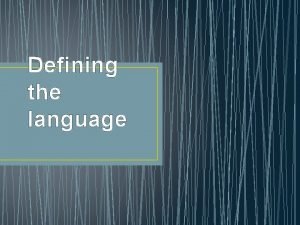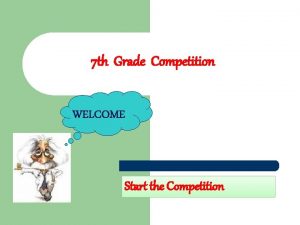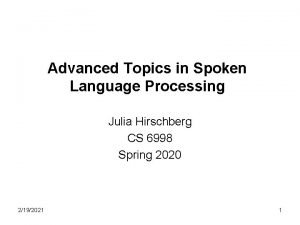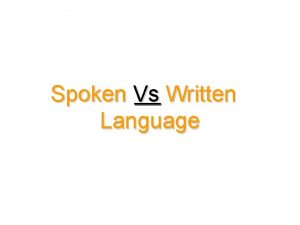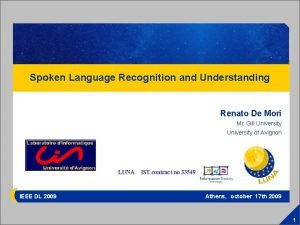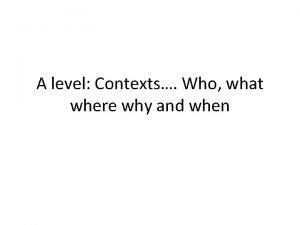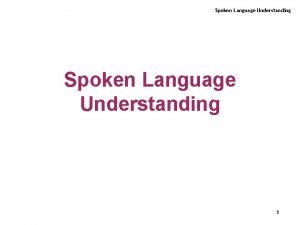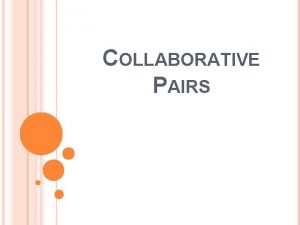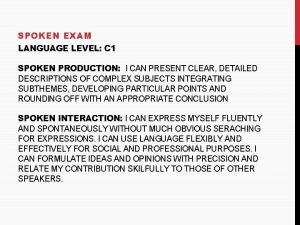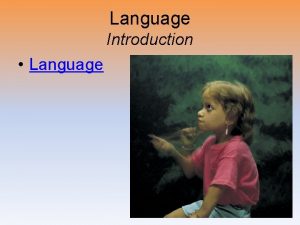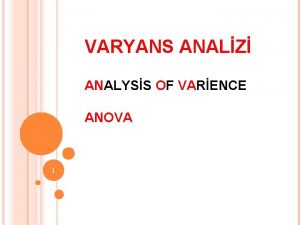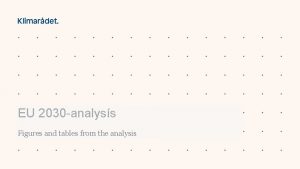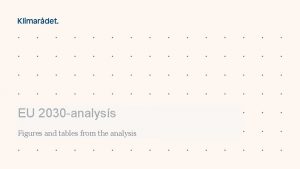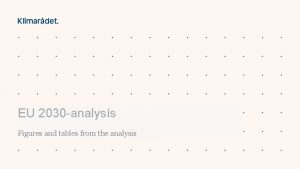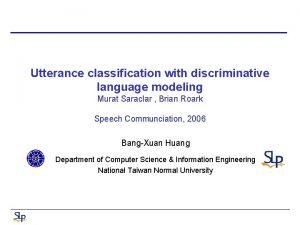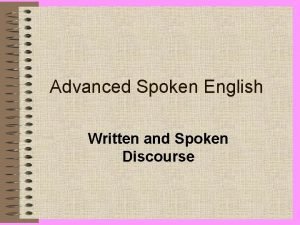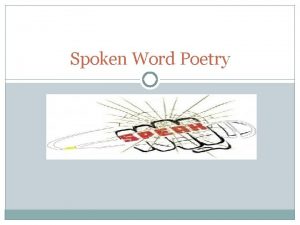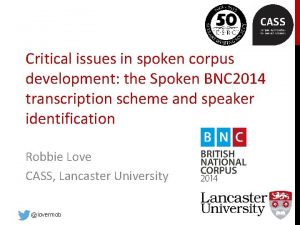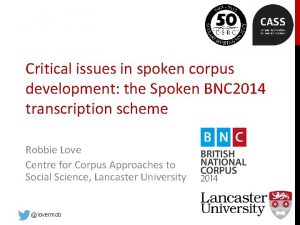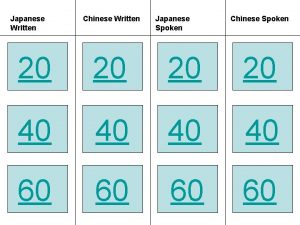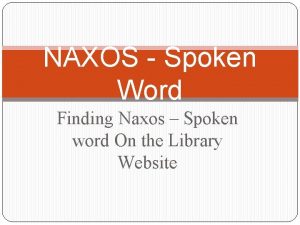Dscourse analyss Spoken language Adjacency pairs Utterance function






















- Slides: 22

Dıscourse analysıs Spoken language

Adjacency pairs Utterance function Expected responce Greeting Congratulations Thanks Apology Acceptance İnform Acknowledge Leave-taking These are called adjecency pairs.

A: would you like to come over for a drink tomorrow? B: yes, that would be nice. (accept) yes, if it would be after six. (accept with a condition) No. (reject) Instead of No, we could say: -thanks very much. (appreciation) -I’m afraid… (softener) -I’m booked up. (reason) -what about…? (face-saver)

�Scarcella & Brunack (1981) Native and non-native speaker’s giving informal invitations Natives Non-natives I was wondering, uh, we’re having a party… I would like to invite you to a party. . I want you to come in a party prefaced Too informal or too blunt Prefacing disagreement Language teachers should design role-paly activities for such linguistic elements.

Exchanges �Exchanges are independently observable entities. �Adjecency pairs may be found in them.

�In • • • class Teacher: Now Maria, you ask Fumiko. Maria: What did you do at the weekend? Fumiko: I went to Wales. Teacher: Good, now Fumiko, you ask Marco Etc…. �Outside the class • Maria: What did you do at the weekend? • Fumiko: I went to Wales. • Maria: Oh, really? Where did you go?

Turn-taking � In natural English discourse turn-takings occur; • Smoothly • With only little overlap and intervention • Only brief silences between turns.

Specific linguistc devices for getting the turn � Getting the turn when one is unable • If I may, Mr. Chairman/ Can I just come in here/etc… � Not taking the turn when one is able (back-channel) • Mm/ha-ha/yeah/no/right/sure/etc… � Predicting one anothers utterances Natural conversational data can be chaotic because of these devices. (p. 127 for example)

In the class � Turn-taking activities are done under the control of the teacher � Students rarely speak out of turn � Include pair and group work to break this pattern � Pay attention to the natural occurances of back-channel, utterance completion, etc… � Instead of teaching these features, specific linguistic realisations can be presented and practiced

Transactions �Transaction • • are used in: Classroom Doctor’s surgeries Formal interviews Opening and closing a conversation

�By drawing attention to how a teacher uses markers to devide up a lesson, He can teach some transactions such as: • • • Right Now Okay So Anyway Well �Get learners to translate them into L 1

Topics � The most dominant definition of topic in language teaching materials is • The expression of topics as titles for the subject matter. Topics can be reason for people to talk or they can arise because people are already talking.

�Beside consantrating on vocabulary of topics, interactive features of topics can be taught: • Opening markers: by the way, incidentally, talking of X • Closing markers: still, anyway, so • Summarising a topic or reacting with evaluation Sounds awful, quite strange, really

Interactional and transactional talk �Transactional talk: • To get the business done • To produce some change �Interactional • • talk: To lubricate the social wheels To establish roles prior to transactional talk To conform and consolidate relationship To express solidarity

Stories, anecdotes, jokes �Labov’s model (1972) for elements found in normal narratives: Abstract Topic Orientation Time, place, characters Complicating events Main events Resolution How events are sorted Codas The bridge between the story and the moment of telling

�Evaluation: • Making the story worth listening by �Telling that you like the joke �Exaggretion �Creating noises � It’s easy to tell stories in L 1 � For L 2, real data is helpful for practice � The narrative elements and markers will not translate from one language to another

� Some openers • I’ll always rebemmer the time… • Did I ever tell you about… • I must tell you about… • I heard a good one the other day… � Some markers to complicate events • And then, suddenly, out of the blue… • Next thing we knew… • And as if that was’t enough… � Some codas • Makes you wonder. . • So, there we are • And that was it, really

Other spoken discourse types �Information-gap activities such as giving directions are very helpful in generating talk. Psathas and Kozloff (1976) found a three-phase structure in such talks: Situation Establishing the starting point, the goal, the means of transport Information & Instruction Where the main point directions are given Ending phase To confirm that the route is understood.

Speech and grammar � Spoken data presents a different picture from the written data. � Spoken data contains forms that would be considered ungrammatical in written discourse. � These mistakes are unnoticed in natural talk. • The problem is is that I don’t know her number

�Speech abounds in • verbless clauses, elipses • Lack of concord and omitted relative particles • False starts, slips of tongue e. g. There’s a few probles are likely to crop up. If you like we could there’s food in the fridge why don’t we could have something if you’re hungry.

Conclusion � Periodical literature of discourse analysis abounds in detailed studies which are often not carried out with any overt pedagogical aim. � However they are useful for teachers and material writers. � Complete naturalness is probably impossible in the class, but engaging the student in authentic activities is important.

thanks
 M-adjacency example
M-adjacency example Adjacency and connectivity in image processing
Adjacency and connectivity in image processing First pair part
First pair part Utterance linguistics
Utterance linguistics Pragmatic analysis
Pragmatic analysis Sense and reference in semantics
Sense and reference in semantics Semantics in linguistics
Semantics in linguistics Heated attendant parking meaning
Heated attendant parking meaning Utterance definition linguistics
Utterance definition linguistics Utterance
Utterance Sentence utterance and proposition
Sentence utterance and proposition Bond angles in octahedral geometry
Bond angles in octahedral geometry Spoken language audio retrieval in irs
Spoken language audio retrieval in irs Language vietnamese
Language vietnamese Back chanelling
Back chanelling Turn constructional component
Turn constructional component Most spoken language in the world
Most spoken language in the world Language system definition
Language system definition Most spoken language in the world
Most spoken language in the world Adv spoken language processing
Adv spoken language processing Spoken vs written
Spoken vs written Renato de mori
Renato de mori Why was french the language spoken in valmonde
Why was french the language spoken in valmonde

